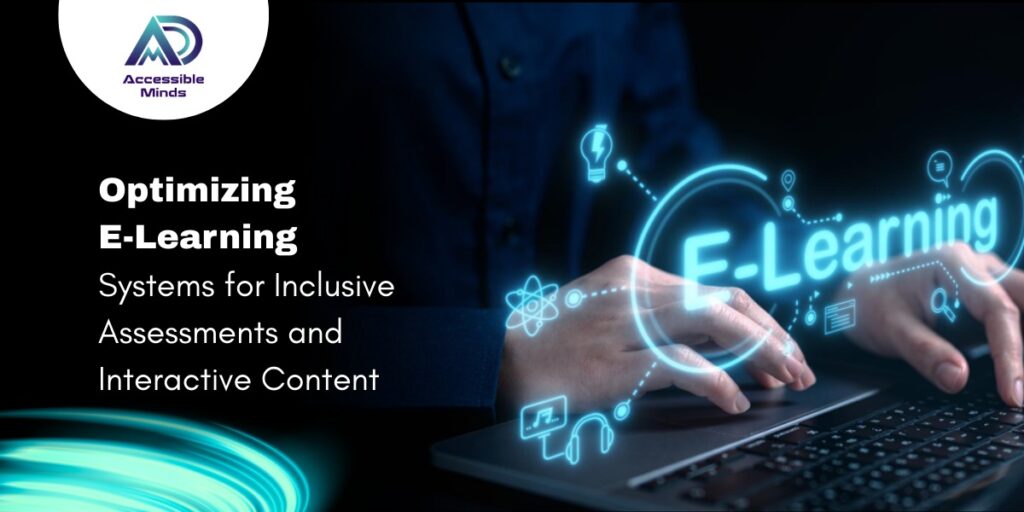Introduction
The demand for eLearning solutions has grown rapidly in recent years, driven by the need for flexible education and corporate training. However, accessibility barriers often prevent learners with disabilities from fully benefiting from digital platforms. This case study explores how Accessibility Remediation Services helped optimize an eLearning system to ensure inclusive assessments and interactive content for all users, regardless of ability.
Background
A leading global education provider relied heavily on its Learning Management System (LMS) to deliver training modules and certification programs. Despite offering high-quality content, the platform faced accessibility challenges. Students with visual impairments struggled to complete quizzes, while learners with motor and cognitive disabilities found interactive simulations difficult to use. These issues not only limited engagement but also created compliance risks under WCAG 2.2 and ADA guidelines.
The Challenge
The primary challenges included:
- Non-accessible assessments: Multiple-choice and interactive quizzes lacked keyboard navigation, screen reader compatibility, and descriptive labels.
- Interactive content barriers: Drag-and-drop exercises, simulations, and multimedia lessons were not designed with accessibility in mind.
- Compliance risks: The platform risked failing to meet WCAG and ADA standards, potentially excluding a significant learner base and harming institutional reputation.
- Inconsistent user experience: Accessibility varied across modules, creating frustration for learners and increasing support requests.
The Solution: Accessibility Remediation Services
The education provider partnered with experts offering Accessibility Remediation Services to address these challenges. The remediation team conducted a comprehensive audit of the LMS, identifying critical accessibility gaps. Based on their findings, a multi-step approach was implemented:
- Assessment Remediation:
- All quizzes were rebuilt with semantic HTML and ARIA attributes for compatibility with screen readers.
- Keyboard-only navigation was enabled, ensuring learners with motor disabilities could complete assessments.
- Timed assessments were adjusted with flexible settings, accommodating students requiring extended time.
- Interactive Content Optimization:
- Drag-and-drop tasks were redesigned with alternative input methods, such as list-based selections.
- Multimedia content was enhanced with captions, transcripts, and audio descriptions.
- Simulations were restructured to provide equivalent experiences without reliance on complex gestures.
- Compliance Alignment:
- All modules were remediated to meet WCAG 2.1 Level AA standards.
- Testing was conducted across screen readers (JAWS, NVDA), voice recognition tools, and alternative input devices.
- Detailed accessibility documentation was created to guide future content development.
- User Experience Enhancement:
- Clear navigation structures were established for consistent learning journeys.
- Inclusive design practices were embedded into the LMS, reducing future remediation needs.
- Feedback loops were implemented, allowing students with disabilities to report usability challenges.
Results
The accessibility remediation initiative delivered measurable outcomes:
- Increased learner engagement: Students with disabilities reported improved ease of use, leading to a 35% increase in assessment completion rates.
- Reduced support tickets: Accessibility-related support requests dropped by 40%, improving operational efficiency.
- Enhanced compliance: The LMS achieved WCAG 2.1 Level AA compliance, mitigating legal and reputational risks.
- Positive learner feedback: Surveys highlighted higher satisfaction scores, particularly regarding inclusivity and fairness of assessments.
Key Takeaways
- Accessibility Remediation Services are essential for transforming eLearning platforms into inclusive systems that serve all learners.
- Proactive remediation not only ensures compliance but also enhances user experience and learner outcomes.
- Inclusive design in assessments and interactive content fosters equity, enabling learners of all abilities to succeed.
- Building accessibility into the development lifecycle reduces long-term costs and avoids repeated retrofitting.
Conclusion
Optimizing eLearning systems for inclusive assessments and interactive content is not just a regulatory requirement, it is a moral and strategic imperative. By leveraging Accessibility Remediation Services, the education provider successfully created a platform where every learner could thrive. The case study demonstrates that accessibility, when integrated thoughtfully, drives engagement, compliance, and long-term value for both organizations and learners alike.

